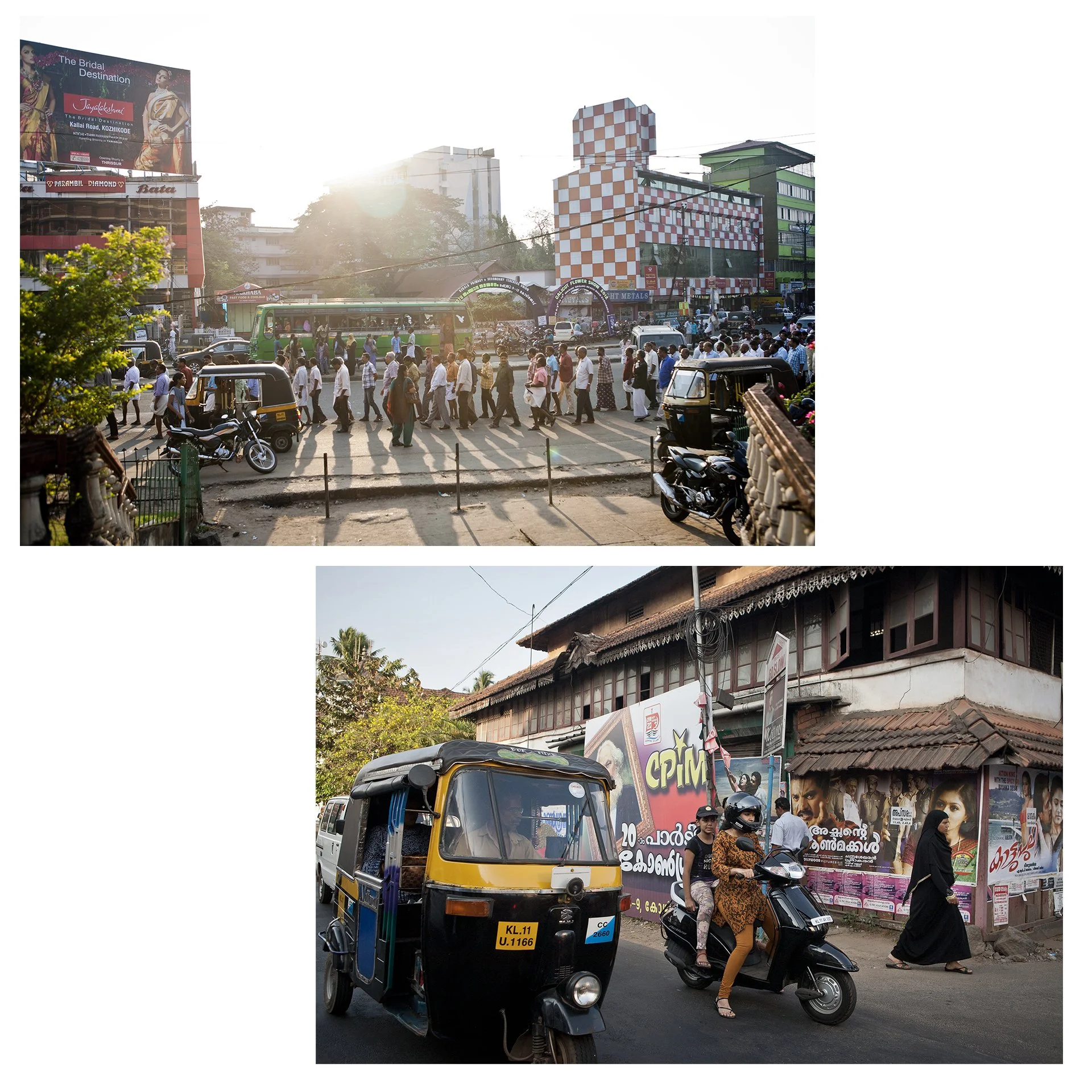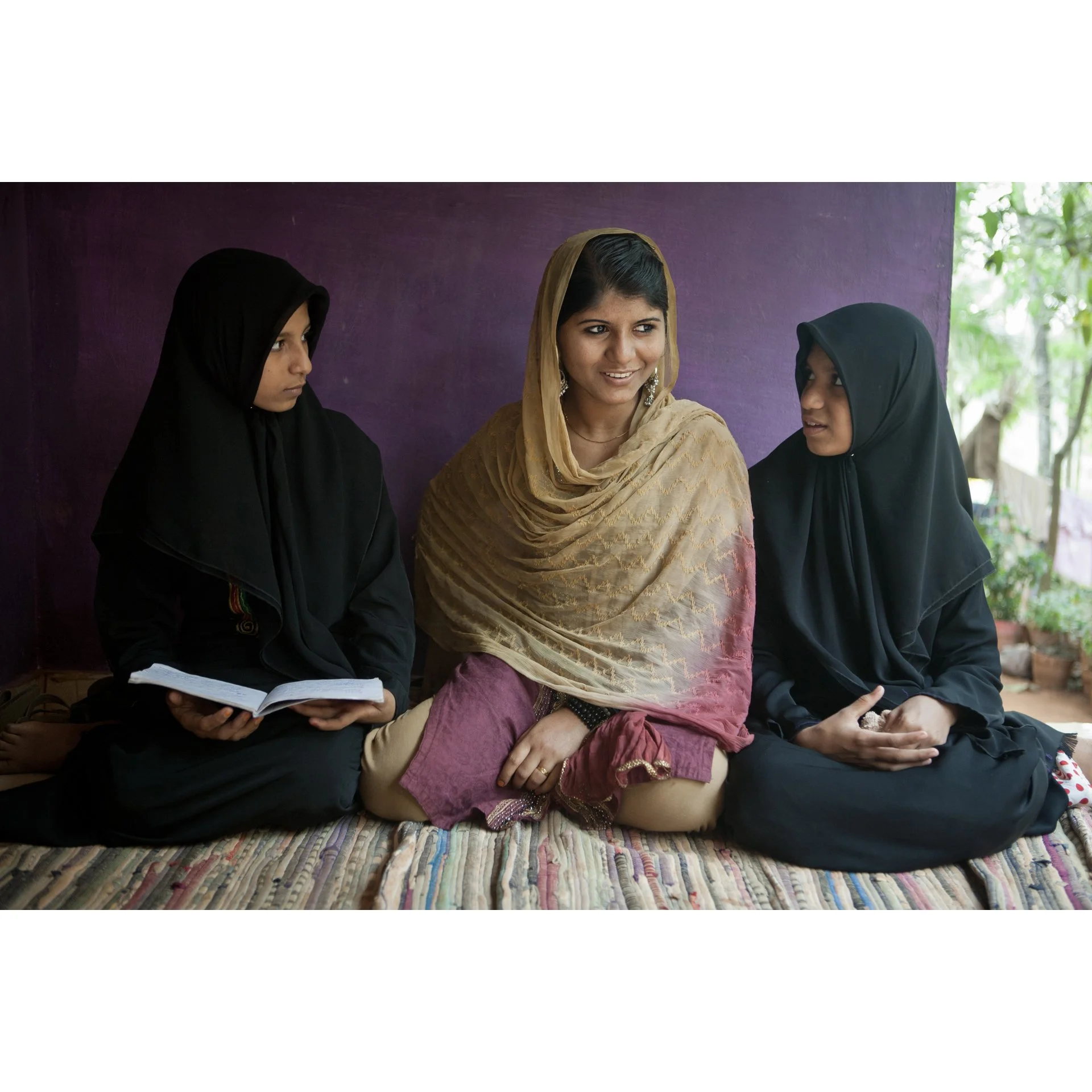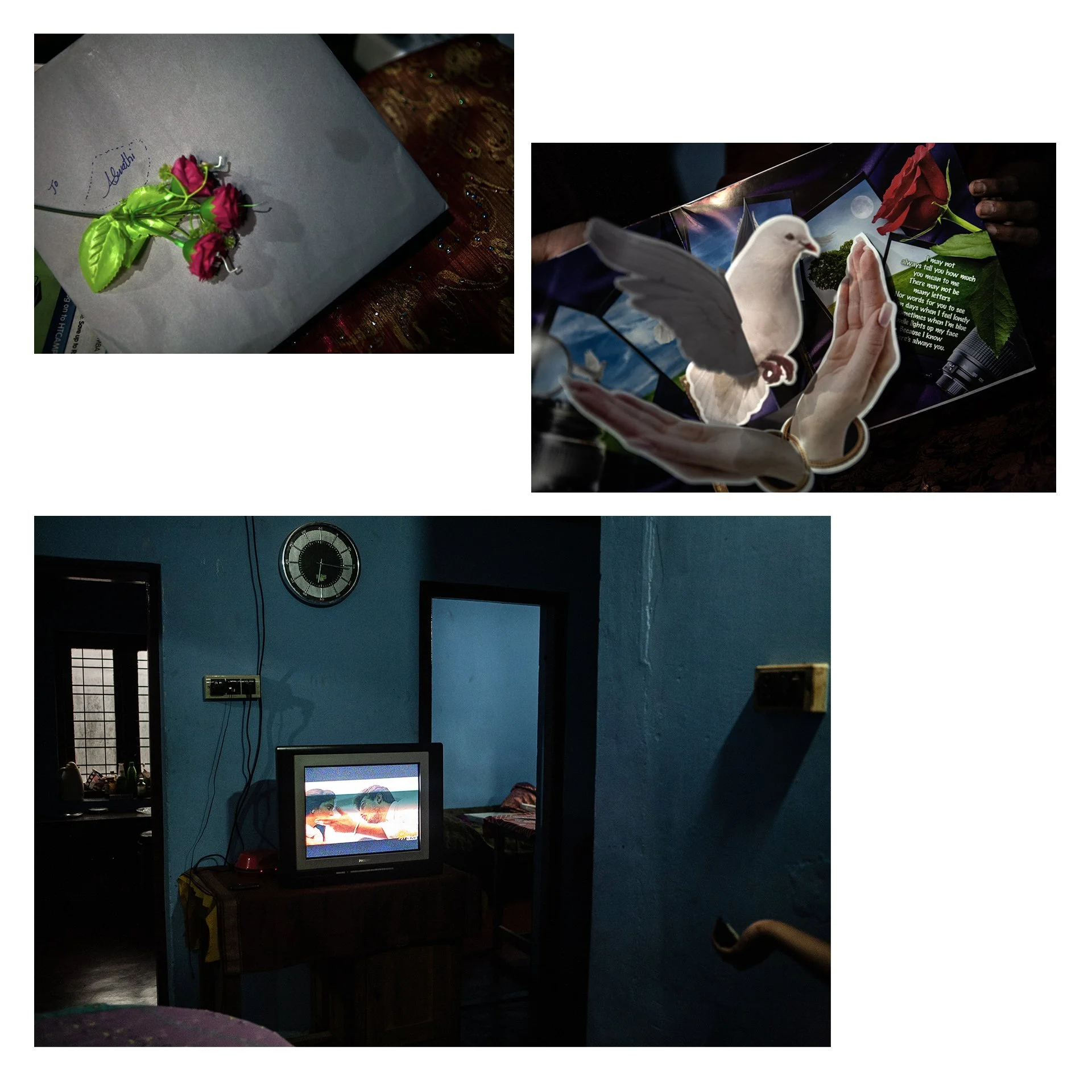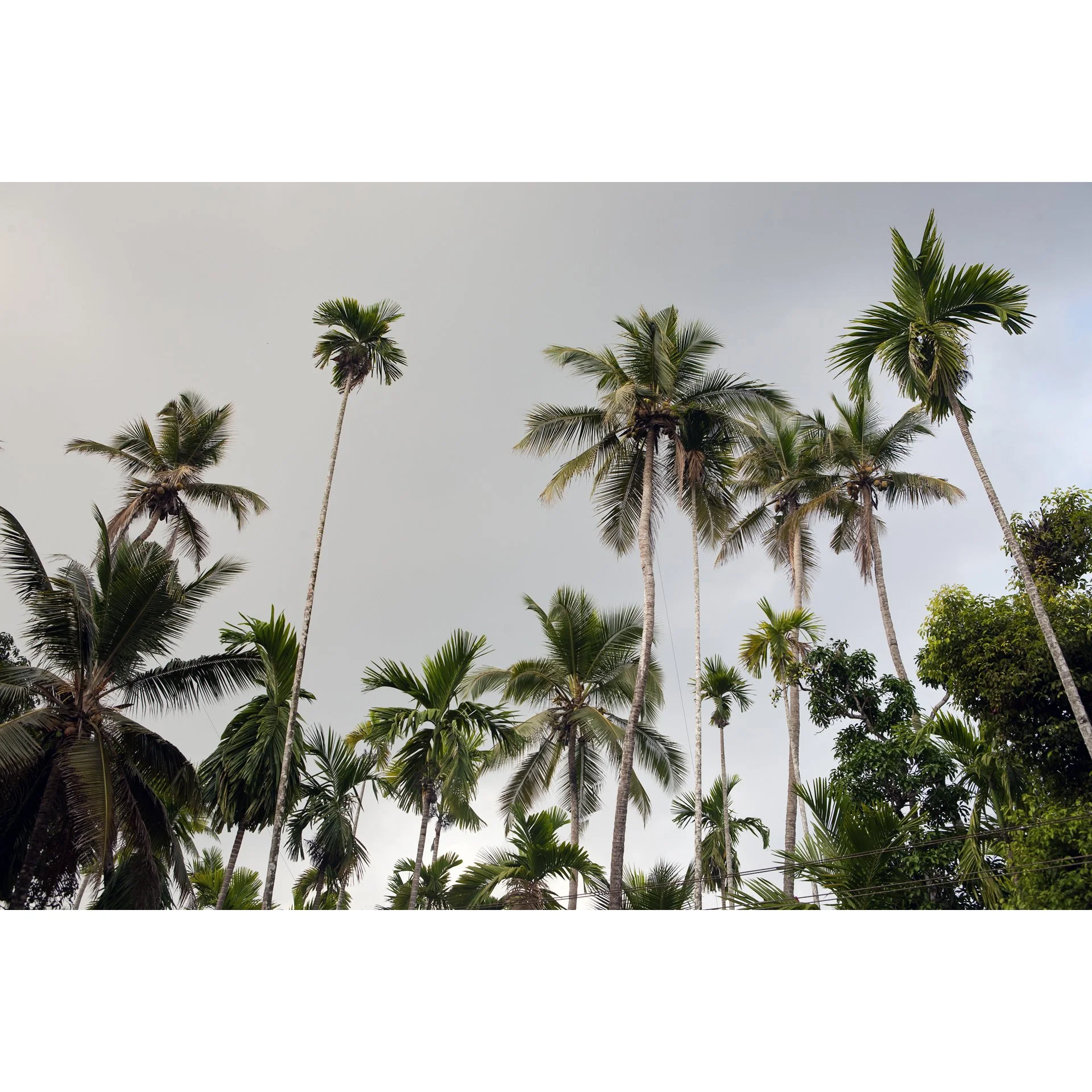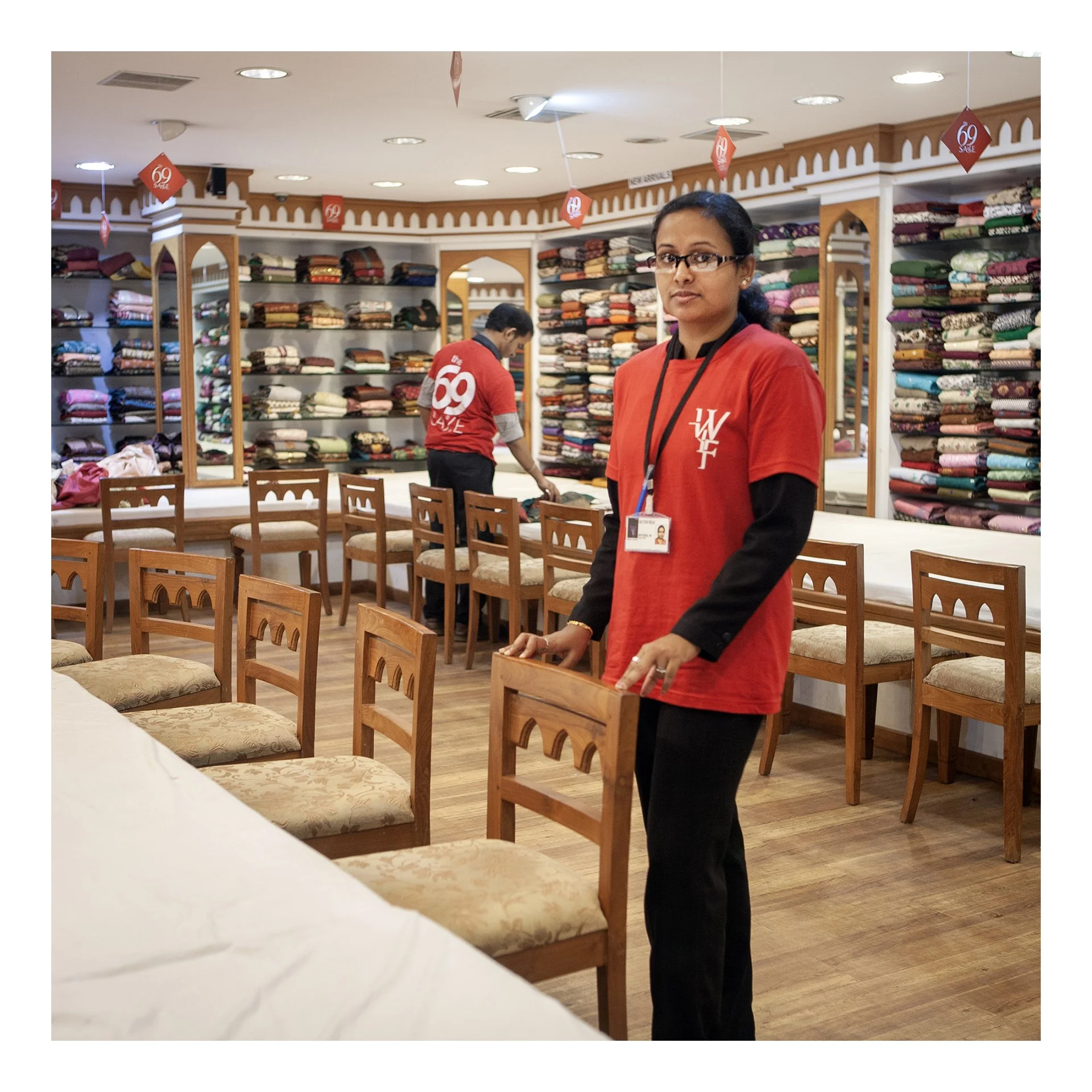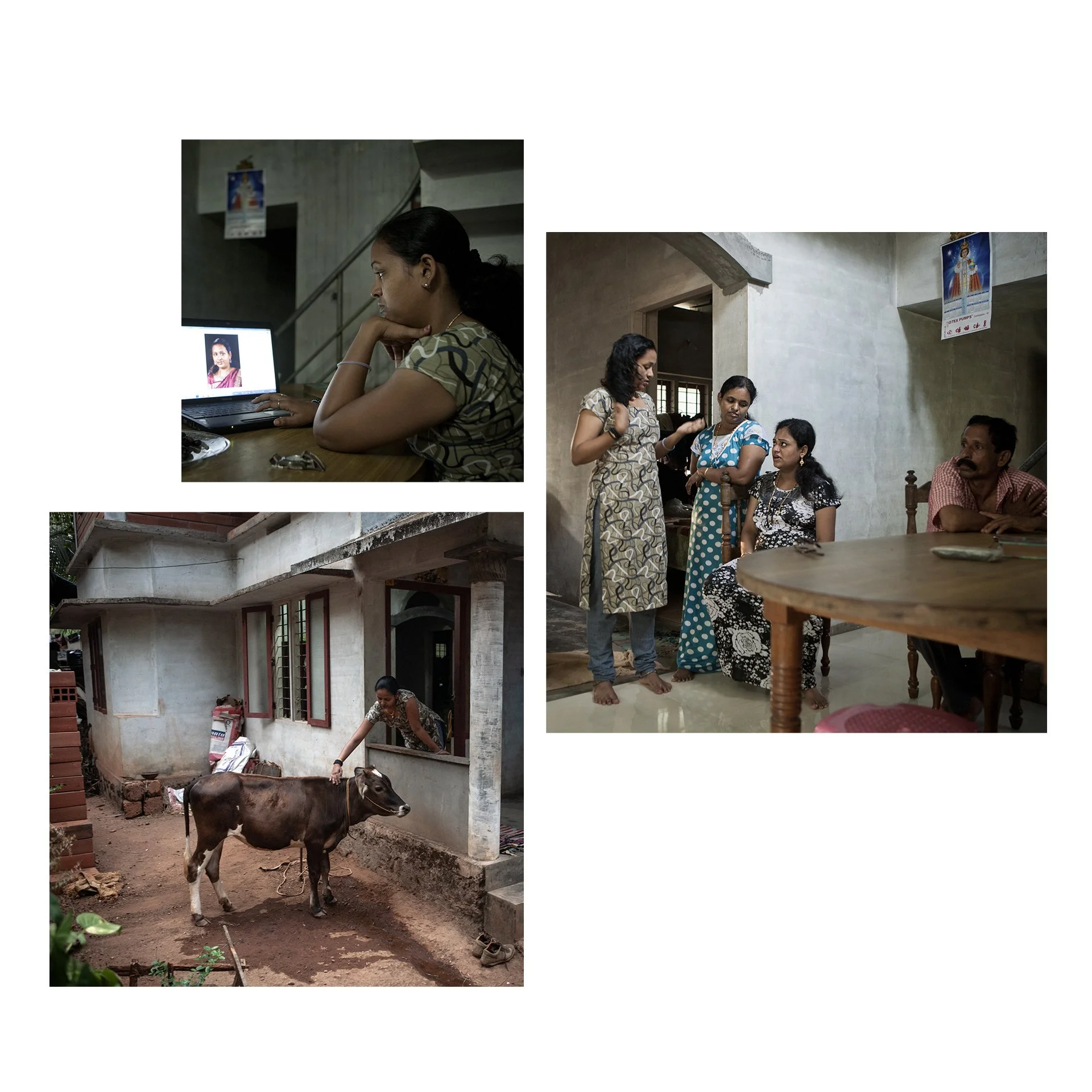Kozhikode (Kerala), my hometown
Inside a marriage bureau
Profiles for matchmaking
Multi-faith brides at 'Better Half' beauty salon
Meharban, 17, with her sisters
Meharban and Noufel meet for the first time
The meeting lasts a few minutes
Meherban and her mother
Ashwathy, 19, says her evening prayer
Ashwathy is engaged to a young man her parents chose
Romance is blooming
Ashwathy and mother preparing for the wedding
Astrology is key to matchmaking in Kerala
Horoscopes being read
Tropical monsoon landscape
Nithya Mary, 22, works at a department store
Nithya's family wants her to get married
Professional photos for matchmaking
Nithya sings at Sunday Mass
Return from work
My Achamma (grandmother) worrying about me
Matchmakers
Weddings = hunting grounds
A gender-segregated wedding
Freedom by the sea
At age 28, I found myself at the crossroads of personal desire and societal expectation. In Kozhikode society, where I was born and my grandmother still lives, remaining unmarried beyond a certain age often invites scrutiny and concern. My grandmother, embodying the collective anxiety of our community, grew increasingly anxious about my marital status. Her concerns mirrored a broader cultural narrative that equates marriage with stability and respectability.
Kozhikode, the coastal city where Vasco da Gama first arrived on the Malabar shore in 1498, long before the idea of a unified India existed, has for centuries been a crossroads of trade, culture and faith. Today it remains a tapestry of diverse religions and traditions, where arranged marriages are still deeply rooted in family and community expectations.
To better understand the practice of arrranged marriage, I followed the lives of three young women - each of a different faith and each at a different stage of the marriage process. Their journeys revealed to me the delicate balance between choice and duty, and offered an intimate glimpse into a tradition that continues to shape identities and futures.
(This project called ‘Marriages are Made in Heaven Bureaus’ was supported by a grant from the University of Oslo.)
